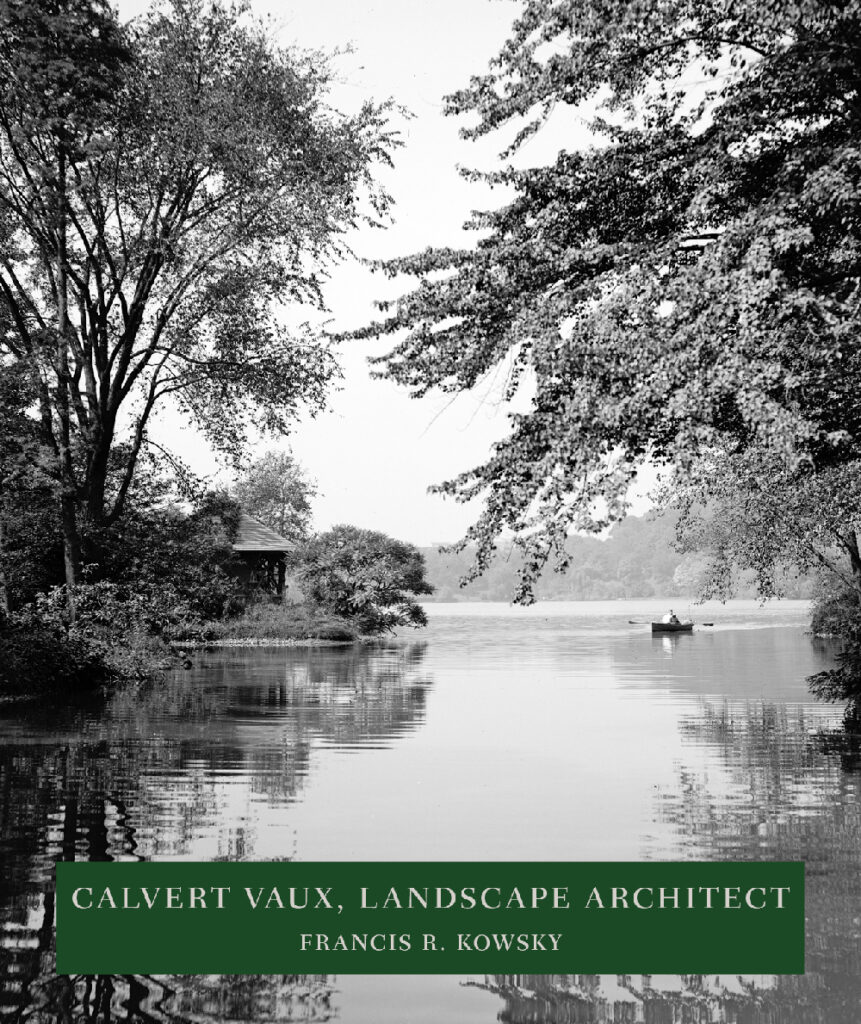Calvert Vaux, Landscape Architect
Francis R. Kowsky
| ISBN: ISBN Not Available | Page Count Not Available |
| Price Not Available | Forthcoming: 05/12/2026 |
Calvert Vaux (1824–1895), better known as an architect, is most frequently remembered as Frederick Law Olmsted’s partner in the design of Central Park, primarily of its fanciful architectural structures. In this visionary book, Francis R. Kowsky illuminates Vaux’s work as a landscape architect through a significant practice of his own.
In 1850, the American architect and landscape gardener Andrew Jackson Downing invited Vaux to be his business partner. Vaux moved to the Hudson Valley, where the young man absorbed Downing’s notions of nature and domesticity which were revolutionizing American taste. The beautiful river that had inspired America’s first native school of landscape painters evoked a strong aesthetic response in Vaux as well.
In 1857, he invited Frederick Law Olmsted to collaborate on a submission to the design competition for the new Central Park; their winning plan initiated a partnership that lasted until 1873. Together they collaborated on other milestones of the public park movement as they sought to make parks permanent, defining features of the country’s burgeoning cities—in Brooklyn, Buffalo, Chicago, and beyond. After his split with Olmsted, Vaux focused primarily on architecture until 1881, when he assumed the post of landscape architect with the New York Department of Public Parks. He also maintained a robust private practice, Vaux & Company, designing both public and private landscapes.
Vaux collaborated again with Olmsted on the Niagara Reservation, the new park to be created on the American side of Niagara Falls. Their plan was intended both to restore and to preserve the distinctive natural scenery around the Falls. After Olmsted severed ties with the Reservation in 1888, Vaux continued his association there until his death in 1895.
Throughout his work, Calvert Vaux was guided by a deep connection to nature and a strong social conscience. His designs for landscapes large and small expressed his belief in the power of scenery to uplift and restore, and his faith in the efficacy of public green spaces to mitigate the unbridled development of America’s burgeoning cities.
About the Author
Francis R. Kowsky
Francis R. Kowsky, FSAH, is author of The Best Planned City in the World: Olmsted, Vaux, and the Buffalo Park System, recipient of a J. B. Jackson Book Prize by the Foundation for Landscape Studies, and the introduction to the LALH reprint edition of The Art of Landscape Architecture by Samuel Parsons Jr. Kowsky is SUNY Distinguished Professor Emeritus at Buffalo State College and author of Country, Park, and City: The Architecture and Life of Calvert Vaux.
